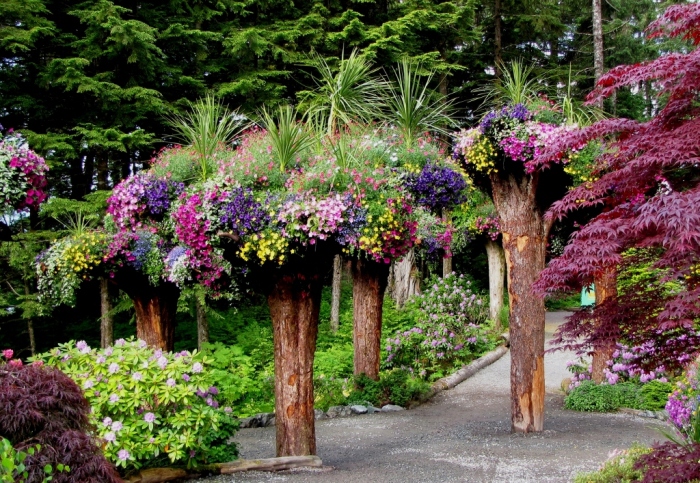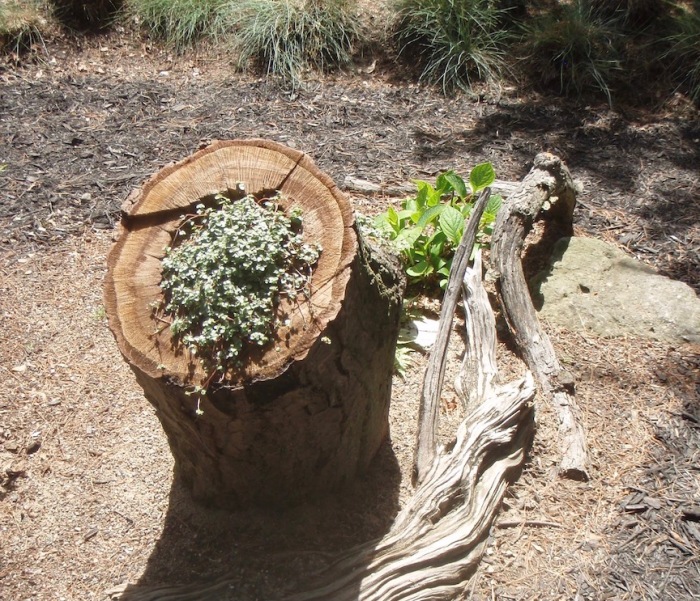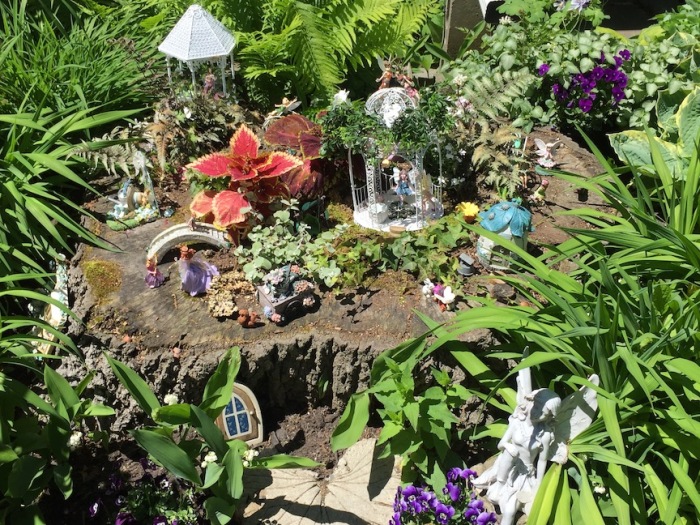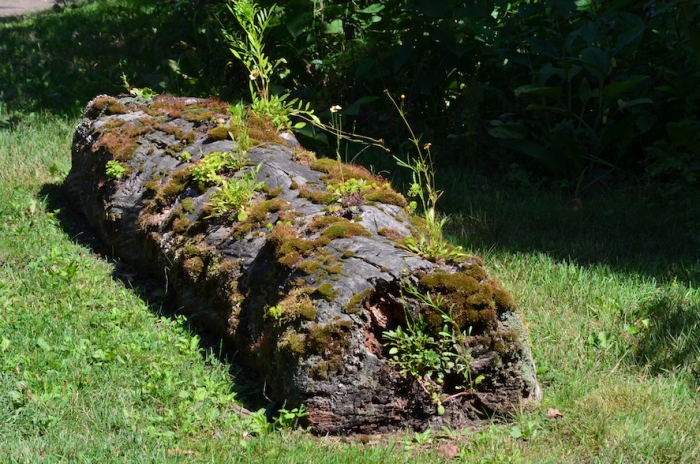Of all the trends that pundits are hailing as hot, hot, hot for 2024, none intrigues me more than stumperies. Elegant and always on point Garden Design magazine declared that, along with other rising trends such as installing a rain garden and accommodating for climate change, building a stumpery will be a really big thing. This makes sense as more of us want new ways to invite wildlife into our gardens and nurture them throughout their stay–a big trend for years now, thankfully.
A very brief history of stumperies
Evidently, the oldest stumpery around is in England (no surprise there) at Biddulph Grange Garden, a National Trust property in North Staffordshire. Built in 1856, the concept became wildly popular with Victorian gardeners. Now stumperies are fairly common in larger English gardens. King Charles has one at his Highgrove estate.
Stumperying 101
I couldn’t find a reason why English gardeners, way back in the day, decided stumperies were the bee’s knees but I’m thinking a big part of the appeal was that it was a pretty creative way to add some really unusual interest in the garden and Victorians loved the unusual. Nowadays, a stumpery makes sense if you live in or near a forested area and you happen to have a bunch of stumps lying about. Reuse, recycle!
Stumps don’t have to come from a forest, by the way. Driftwood works just as well. Or you could work with a mix of stumps and logs (see below).
But, whether you naturally inherited a stump or two or somehow managed to procure some, you have to make a fundamental decision to begin with: Roots up or roots down?
All the English Victorian stumperies I saw via Google displayed their stumps roots up. This, I’m sure, has to do with getting maximum textural interest. All those crazy roots twisting about in the air.
There are even a few ambitious stumpery gardeners who have taken the idea to dramatic heights by installing a tall dead tree upside down. Biddulph Grange’s designer James Bateman actually did it first with the idea that it would give even more inspiration to his garden’s visitors.
And then there is the Upside Down Forest of Glacier Gardens in Alaska.

Where to put your stumpery
Assuming you can move your stumps, positioning them in a shady spot is the most popular choice–the better to get that whole woodland vibe going. But if you happen to have a collection of gnarly driftwood stumps, I’d say consider a bright, sunny spot and lean into a windswept wild beach look.
Some classic English stumperies were designed to line a winding pathway–the better to showcase each of your wonderfully shaped stumps.
Don’t restrict yourself to a small, flat area, however. A slope can be an excellent spot because it gives you the opportunity to position the stumps so that you’re looking up into the roots and any stumps you position farther away won’t get hidden behind the ones you’ve placed up front.
What to plant
Besides planting the actual stumps themselves, there is the issue of what to plant along with them. Ferns, hellebores, hostas and dwarf evergreens are all great choices for a woodland theme. Make your stumpery a focal point in the spring by planting oodles of late winter and early spring bulbs, too.
Here’s Jack Lindfield, Head Gardener at National Trust Ickworth in Britain giving a quick tour of his stumpery, including some great suggestions for stumpery plants and how to add a dragon. Seriously.
National Trust Ickworth head gardener Jack Lindfield offers a quick guide to ideal plants for a stumpery and how to add a dragon.
Roots down stumpery inspirations
If your stumps happen to still be firmly rooted in the ground I wouldn’t give up on the idea of creating a stumpery. I get the impression that there are no hard and fast rules here.

A hollow stump became a container planting in a garden in North Toronto.
In fact, anyone who’s had the misfortune of losing a bunch of trees to a windstorm may take the whole Roots-In-The-Ground-style stumpery and really run with it.
One is not the loneliness number
One stump technically does not make a stumpery, unfortunately, but don’t let that stop you from having fun with your single stump in any case. Make it a focal point, either as an organic container (see above), an organic pedestal to display a real container or as real estate for the fairies in your life.

A fairy village on a large tree stump in a garden in the Beach neighbourhood of Toronto.
The very cool thing about stumps
Roots up or roots down, a stump or a group of stumps, whatever you’re working with you have to keep in mind that stumps are organic. They will break down eventually. This creates a special environment that the savvy stumpery gardener keeps in mind and even enhances.
So consider welcoming and working with what comes naturally to a rotting stump:
- mosses
- mushrooms
- ferns
- a large variety of insects
- frogs

Technically not a stump but this log does a great job as a garden feature nonetheless.
If, after all this, a stumpery does not quite float your boat but building a rain garden (another predicted top trend as mentioned above) does then check out my post on choosing plants for a rain garden that you can actually eat: 5 Wild Plants For An Edible Rain Garden. That’s a win-win!
















Pingback: Jazz up a woodland garden | Ministry of the fence
Pingback: Get the nurse (log or rock)! | Ministry of the fence
Pingback: Upcycle stumps and logs for a rustic chic garden | Ministry of the fence
Pingback: A woodland garden rocks on the coast of Maine | Ministry of the fence
Pingback: A rule-breaking front yard | Ministry of the fence
Pingback: The winter garden, only better | Ministry of the fence